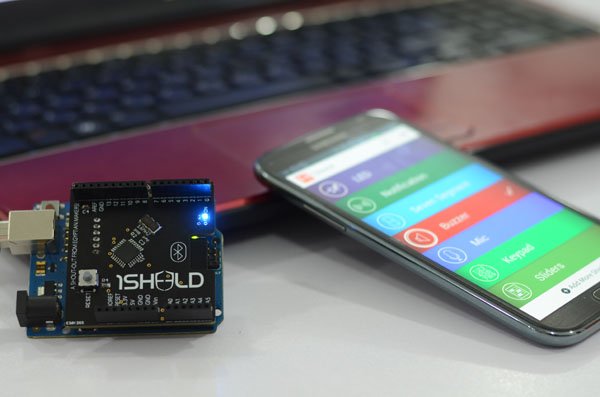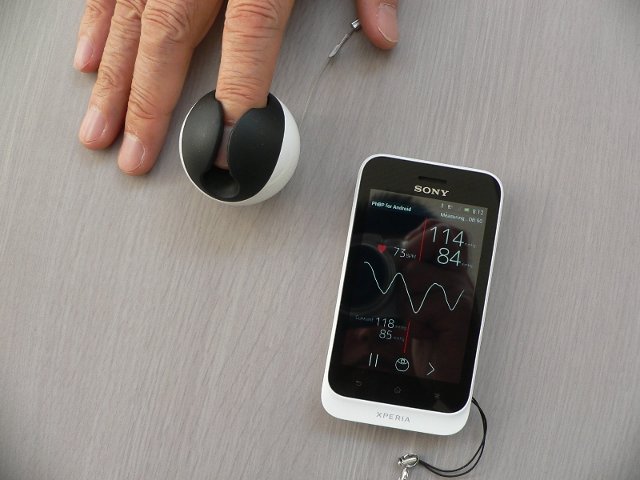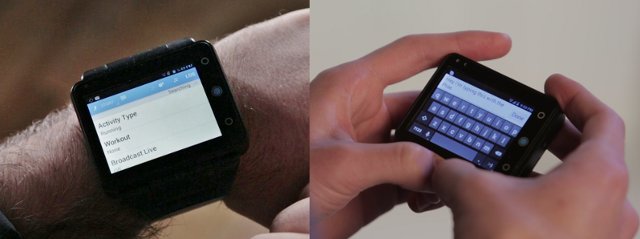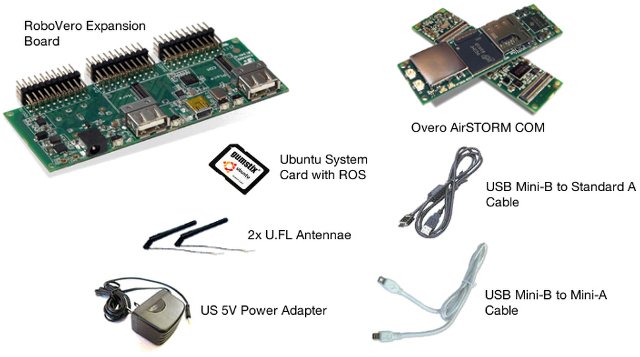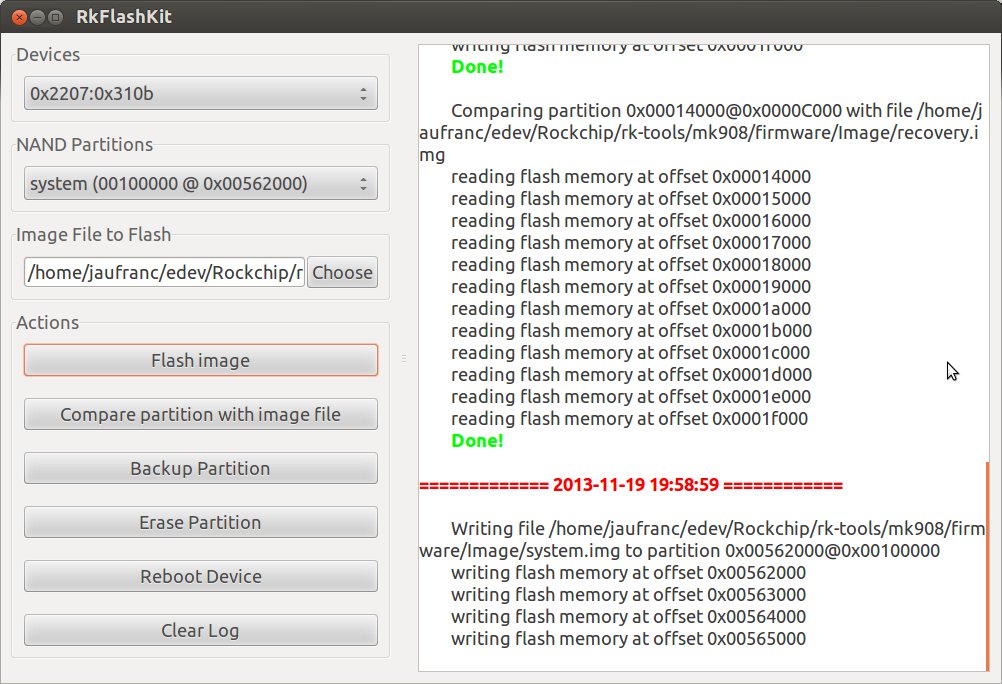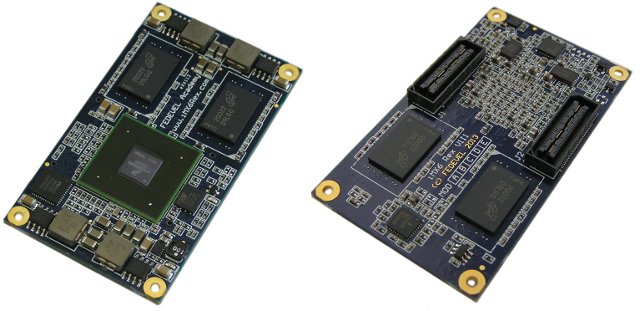To get started with Arduino, a simple board is enough, with soon, you’ll need to add shields for Wi-Fi, sensors, maybe a small display, etc.. and costs add up. Integreight, an Egyptian startup, had to idea to create a simple shield called 1Sheeld that can leverage your smartphone hardware assets such as Wi-Fi, LEDs, sensors, the display, the speaker, etc.., so you don’t have to spend extra money on shields. Technical Specifications: Runs on an ATmega162 @ 16 MHz Uses a standard HC-06 adapter (Bluetooth 2.0) providing up to 30 feet range (about 9 meters) Uses a modified version of the Firmata protocol Can communicate with Arduino using UART 50mA current draw That’s for the hardware, and there’s also a software platform and Android app to manages the communication between the shield and the smartphone, and select different shields options. You’d have to write your sketch using the company’s library, […]
ICMe Cuffless Finger Blood Pressure Monitor Sends Results to your Smartphone via Bluetooth 4.0
Nihon University have developed a tiny blood pressure monitor, which you can just touch with your finger, in order to get maximum and minimum (systolic and diastolic) blood pressures, both average and real-time values, as well as pulse rate and pulse waveform displayed on your smartphone. ICMe uses photo transistors to detect LED light reflected on a finger, and then converts pulse wave data obtained from the light to a blood pressure value. Phase Shift Method-based data processing and algorithm is used for the conversion to a blood pressure value, and results are transmitted to the phone via Bluetooth 4.0 (LE?). The device is composed of a custom main chip, LEDs, photo transistors, and a Bluetooth 4.0 module. Tech-on reports an early much larger model was exhibited last year at Medica 2013, and the new miniaturized model is currently showcased at Medica 2013, which runs from Nov 20 to 23, […]
Embedded Linux Conference Europe 2013 Videos and Presentation Slides
I uploaded several Embedded Linux Conference Europe videos in 2011 and 2012 that were hosted by Free Electrons and/or the Linux Foundation for download, but this year, it seems the Linux Foundation has discovered a new (to them) online video service called YouTube, and created a playlist with (for now) 18 sessions of ELCE 2013. I’ve embedded the playlist below starting with the “Status of Embedded Linux (2013)“, by Tim Bird, Sony Mobile which takes place every year, and is among the most popular presentations. Most of ELCE 2013 presentation slides are already available from eLinux.org. You can also have a look at the list of ELCE 2013 talks I featured before the event took place. [Update: I’ve just watched the Status of Embedded Linux video, and I though it may be interested to list the topics (and keywords) used for what has happened in embedded linux in the last […]
Neptune Pine SmartWatch Phone Powered by Snapdragon S4 Dual Core Processor
More and more companies are jumping on the smartwatch bandwagon. Neptune Computer, a Canadian based startup, has just launched a Kickstarter campaign for the Pine, a watchphone running Android 4.1.2, and featuring a Qualcomm Snapdragon S4 dual core SoC. On the surface it looks very similar to SGPAX S5 smartwatch which also features a dual core processor (Mediatek MT6577), and a SIM card slot, and runs Android 4.0. Neptune Pine, however, comes with features and improvements which may make the 3 to 4 month “kickstarter wait” worth it: a larger 2.4″ detachable screen, larger internal storage, dual camera support, a larger battery providing up to 5 days in standby mode, and an IP67 rating that certifies the device to be dustproof and waterproof at depth of less than 1 meter. Neptune Pine specifications: SoC – Qualcomm Snapdragon S4 Dual-Core Processor @ 1.2Ghz System Memory – 512 MB RAM Storage – […]
Qualcomm Unveils Snapdragon 805 Processor with Full 4K Support
Qualcomm has just announced their “next generation” Snapdragon 805 “Ultra HD” processor, part of the Snapdragon 800 family. The SoC supports video playback and capture, image and graphics processing on display supporting Ultra HD (aka 4K2K or 2160p) resolution. Snapdragon 805 features four Krait 450 core up to 2.5GHz, and an Adreno 420 GPU which is claimed to have 40% more graphics processing than its predecessor: Adreno 330. Snapdragon 805 key features: High performance – Krait 450 quad-core CPU @ 2.5 GHz per core, memory bandwidth support of up to 25.6 GB/second. High graphics performance and Ultra HD resolution – Adreno 420 GPU with support for hardware tessellation and geometry shaders, and 4K processing. Connectivity – Integration with either the Qualcomm Gobi MDM9x25 or the Gobi MDM9x35 modem (just announced too) for cellular connectivity. Gobi MDM9x25 support LTE Category 4 with peak data rates of up to 150Mbps, and the […]
Gumstix Announces Solution Kits for their CPU Modules and Boards
Gumstix has recently unveiled several solution kits featuring their Overo and DuoVero Computer-on-Modules (CoMs), Pepper single board computer, and several expansions boards, together with required accessories, and software packages, in order to help their customers getting started more easily. All these solutions are based on Texas Instruments OMAP3, OMAP4, and/or Sitara processors, and run Linux (Ubuntu or Yocto), and sometimes Android for the kits with displays. The solutions kits target 6 different types of applications and/or markets: Robotics Robotic Development Kit (Pictured above) with one Overo AirSTORM CoM (OMAP3703), and RoboVero expansion board. The kit is better suited for motor control applications. Mobile Robotic Development Kit with one Overo AirSTORM CoM, and Turtlecore expansion board to be used with iRobot Create. The kits ship with a Linaro (Ubuntu for Overo) system card and Robot Operating System (ROS) pre-installed. Handhelds 3.5″ Handheld Development Kit featuring Overo AirSTORM CoM with Alto35 cutomizable […]
How to Flash Rockchip RK3066 / RK3188 Firmware in Linux
Rockchip provides 2 tools to update the flash: RkBatchTool – Used to upgrade firmware with a single file RkAndroidTool – Used to flash the NAND flash with image corresponding to particular partition, e.g. system.img. kernel.img, boot.img. recovery.img. etc… One problem is that the company only provides these tools for Windows, so if you’re using a Linux based operating systems, you’d have to run a Windows XP or 7 virtual machine in VirtualBox or VMWare, which is an inconvenience, and requires a license in theory. To work around this issue, I’ve tried to use ReactOS, an open source operating systems compatible with Windows XP, but although the USB drivers appeared to install properly, RKAndroidTool failed to recognized my device (MK908). But a member of Mini PCs community informed me about a tool called RkFlashKit, written in Python and using GTK, that can flash firmware to Rockchip RK3066 and RK3188 devices in […]
iMX6 Rex Open Source Hardware SoM and Baseboard Designed to Teach Schematic and PCB Layout Design
Voipac, a Slovakian manufacturing company, has recently unveiled iMX6 Rex module and iMX6 Rex development baseboard, which have mainly been developed in order to support FEDEVEL Academy Schematic Design and Advanced PCB Layout courses, but can also be used for other purposes. The module is powered by Freescale i.MX6 Dual (Solo and Quad also available on request), and comes with 512MB RAM (upgradeable to 4GB), and up to 32MB SPI flash. The complete hardware will be released under an open source hardware license, but with some caveats as I’ll explain later. iMX6 Rex module specifications (basic configuration): SoC – Freescale iMX6 processor up to 1.2GHz / 2 cores (1 and 4 cores also available) System Memory – 512MB DDR3-1066 (533MHz), up to 4GB Storage – 2MB On board SPI Flash, up to 32MB 10/100/1000 Mbps Ethernet PHY 2 high speed board to board connectors (only one required) with signals for HDMI, […]


